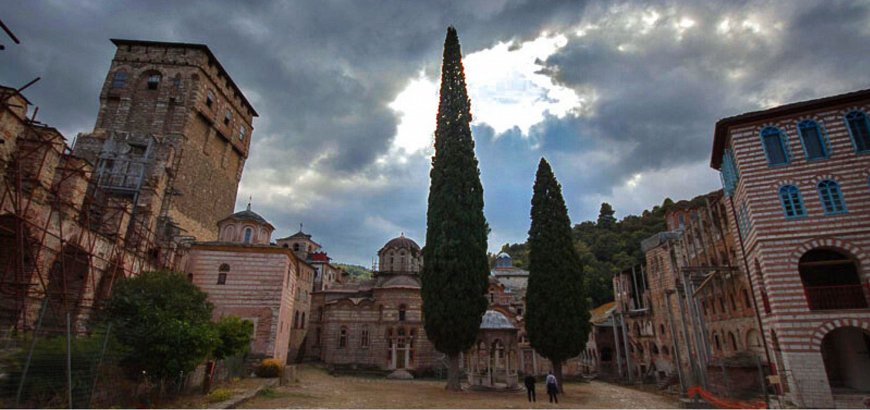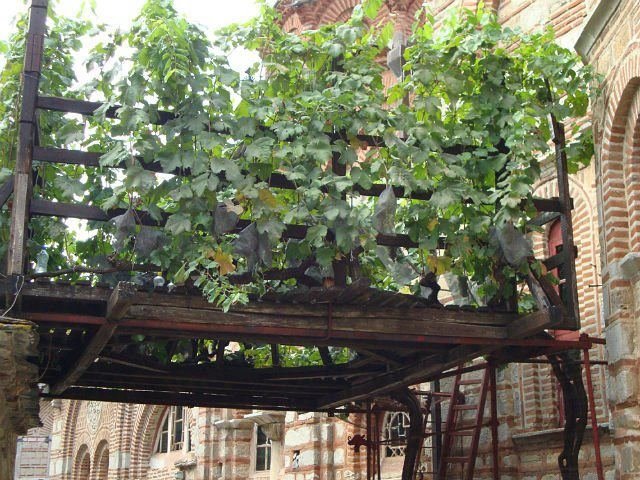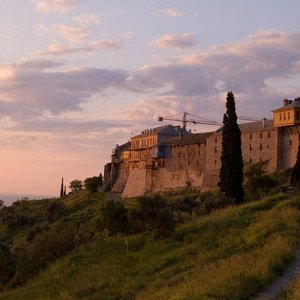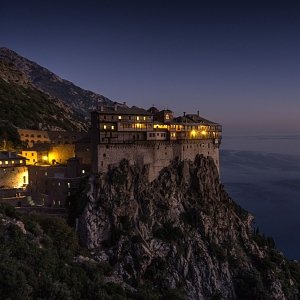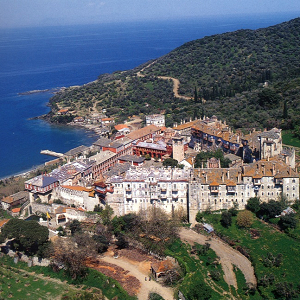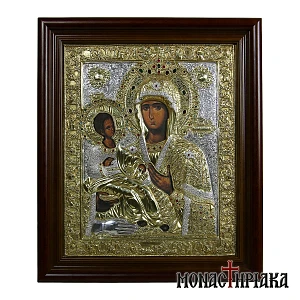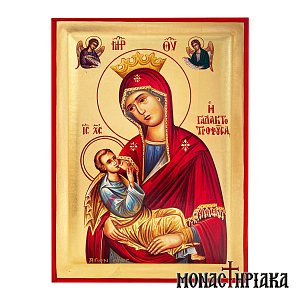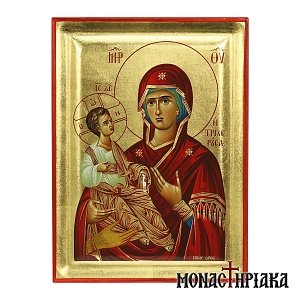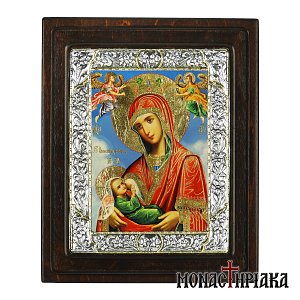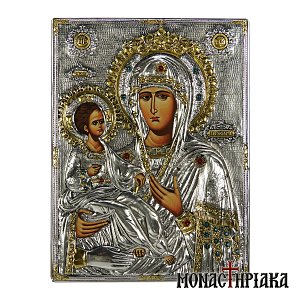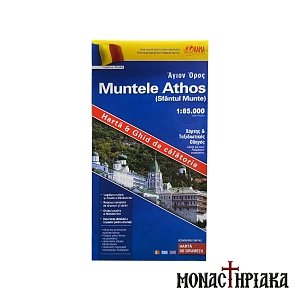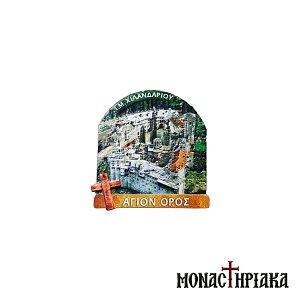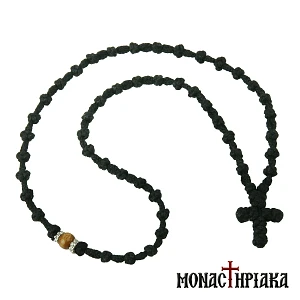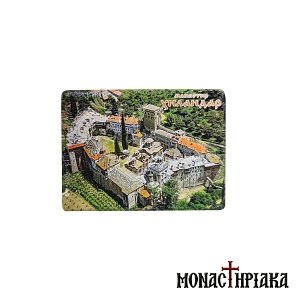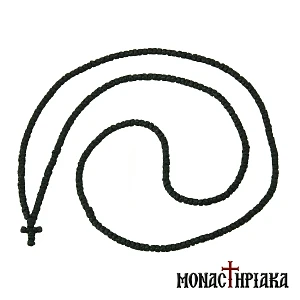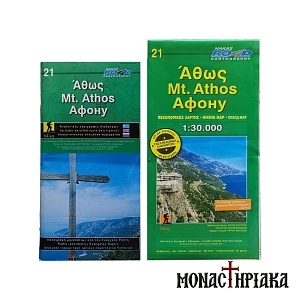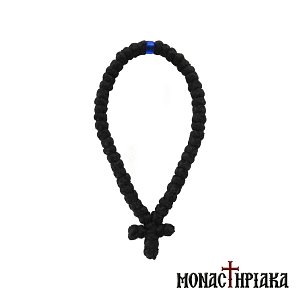Where is the Holy Monastery of Hilandar located?
The Holy Monastery of Hilandar is built on the north-eastern side of Mount Athos, in a wooded area, at an altitude of 50m. The Monastery is located 45 minutes from the sea and celebrates on November 21 the Presentation of the Virgin Mary.
When was the Holy Monastery of Hilandar founded and who is its founder
The Holy Monastery of Hilandar is essentially the Serbian monastery of Mount Athos and today it is in the 4th hierarchical position in the ranking of the monasteries of Mount Athos.

The name of the Monastery probably comes from the founder of the oldest monastery in the area, the hermit Grigorios Helandaris. Around 980 AD the monk Grigorios built, together with other monks, a small church and a small house, on the site where the Monastery is today.
According to tradition, there is also the interpretation that the name of the Monastery is based on the etymology of the word "helandio" which is the Byzantine ship.
Of course, the Serbian kings Ratko and Stefano I Nemanja are considered as later founders of the Hilandar Monastery. During the 12th century, the two Serbian rulers were monks in the Holy Monastery of Vatopedi and received the names Saint Savvas and Saint Simeon respectively. During that time, they helped significantly in the official establishment of the Hilandar Monastery.

The Holy Monastery of Hilandar over the centuries
The Serbian Saints Savva and Symeon: the great benefactors and founders of the Hilandar Monastery
The monastery, as it is known today, was founded in the 12th century by the ruler of Serbia Stefan Nemanja and his son Rastko, the later monks Simeon and Savva, who are perhaps the most popular Saints of Serbia. Hilandar originally belonged to the Vatopedi Monastery, but was granted to Saints Savvas and Symeon.
In 1198, with a chrysobull, Emperor Alexios III ratified the Serbian occupation of the Monastery. Gradually many other smaller historical Monasteries, such as Zygos, Agios Vasilios, Komitissa, Kalykas, Paparnikia, Omologitos, Strovelia and others, were added to the borders of Hilandar Monastery.

The flourishing period of the Hilandar Monastery and the Serbian school of literature
In the 13th and 14th centuries the Monastery of Hilandar experienced a great period of prosperity and flourishing. Later, in the middle of the 16th century, the school of Serbian literature developed, which was a center of intellectual radiation until the 17th century.
Among the Serbian rulers who greatly helped Hilandar financially were Stefanos Milutin (1282-1321) and Neagoe Basarab (1512-21). In 1293 Stefanos Urosh Milutin founded the Church of the Monastery, dedicated to the Presentation of Virgin Mary (November 21), while the homonymous tower on the road to the Monastery's arsana (=port) was built in his name.

The period of the Turkish rule: periods of prosperity and decline
The continuous strengthening of the monastery with monks from Serbia and the undivided support of the Serbian people and their rulers, ensured the flourishing and longevity of the monastery in difficult years, during the period of the Turkish rule.
However, in 1676 the Archbishopric of Pec was merged into the Ecumenical throne, causing many Serbian monks to leave. The situation was normalized only in 1896 on the occasion of the visit of the king of Serbia, Alexander I, who undertook the financial support and renovation of the Monastery.
The fires that hit the Holy Monastery of Hilandar
In the 17th century, the attendance of Serbian monks decreased, while the decline was strongly observed in the 18th century, after the disastrous fire of 1722. At that time, the Monastery of Hilandar was actually inhabited by Bulgarian monks.
The Monastery was tested again in 1891 by an equally devastating fire.
In more recent history, Hilandar actively supported the struggles of the Greeks in both World Wars.

The miraculous tomb of Saint Simeon
Behind the abbot's throne, there is the miraculous tomb of Saint Simeon. According to tradition, at some point a vineyard grew, which bears fruit to this day and helps women conceive.
The frescoes of the Monastery in the Church and Trapeza
The frescoes of the Church of the Monastery were painted in 1319-1320 and painted over in 1803. The phiale (wellspring of holy water) is in the middle of the courtyard and was built in 1784, with frescoes by the Galatsano painter Makarios, in 1847.
In the refectory (trapeza) of the Monastery there are frescoes from 1629, which overlap older frescoes of the 14th century.
The metochia of the Monastery of Hilandar
The Holy Monastery of Hilandar has 11 chapels inside the monastery complex and 2 chapels outside, as well as 17 Cells, 15 of which are located in Karyes. Of the metochia of the Monastery, three are preserved today: Komitsa, Zoodochos Pigi near Ierissos, and Saint Nikolaos in Sozopoli, Halkidiki.

The relics of the Hilandar Monastery: Panagia Tricherousa and Panagia Galaktotrophousa
Most of the relics of the Hilandar Monastery were donated by Serbian rulers and Russian tsars.
Of these, the silver altar of Saint Simeon stands out with the vine, the fruits of which have helped in the pregnancy of many women.
In addition, in the sacristy of the Monastery, the miraculous icons of the Virgin Mary are kept with extra care. Most important is the icon of Panagia Tricherousa, with a gilded coating and many ancient coins, and Panagia Galaktotrofousa.
Also, some embroidered robes and fabrics, two crosses with Sacred Wood, the diptych with 24 miniatures, the cane and shroud of the Lord Jesus Christ and armchairs decorated with mother-of-pearl stand out.
In the sacristy of the Hilandar Monastery, holy relics of Saints are also kept, a piece of the sawed-off cart of the prophet Isaiah, the right leg of Saint Panteleimon, the right hand of Nikephoros Patriarch of Constantinople, part of the relics of Saint Barbara and Saint Catherine.

The library of the Hilandar Monastery
181 Greek and 809 Slavic codices are stored in the monastery's library. In addition, at least 20,000 printed books are kept, of which 3,000 are in Greek, as well as 400 documents in various languages. Finally, there are old scrolls, Greek and Slavic, 400 seals, documents and gold bullion of Byzantine Emperors.
Contact with Hilandar Monastery:
Phone: +30 23770 23797, +30 23770 23494
Email: pilgrims@hilandar.org
